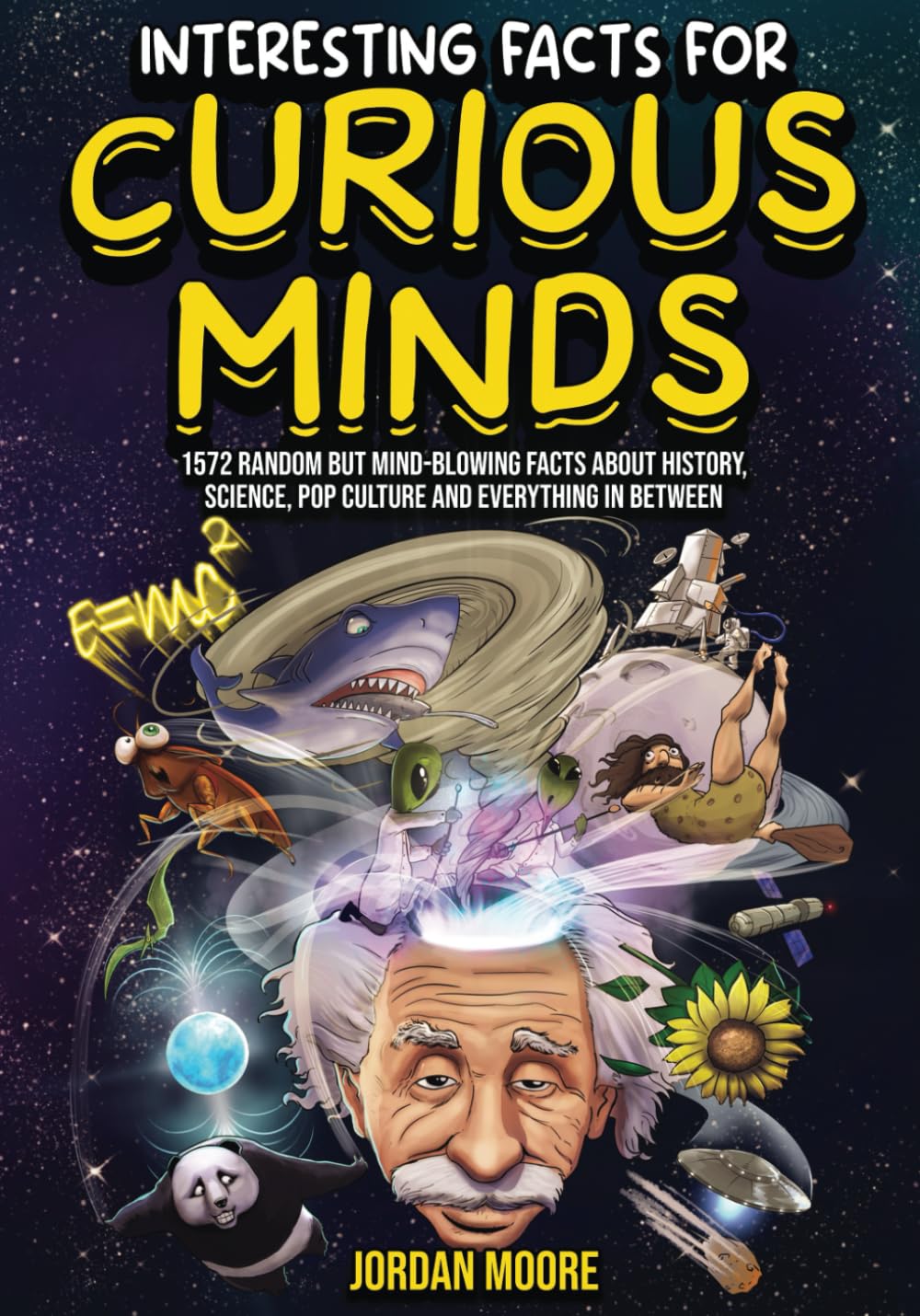
Interesting Facts For Curious Minds: 1572 Random But Mind-Blowing Facts About History, Science, Pop Culture And Everything In Between
From Felix The Cat To Anime
byFrom Felix the Cat to Anime, the journey of animation has seen incredible technological advancements, shifting from early methods like hand-drawn images to the sophisticated computer-generated animations we see today. The first forms of animation began with static drawings projected using devices such as the “magic lantern,” a precursor to modern film projectors. The magic lantern allowed artists to display their paintings or drawings in a way that brought them to life, though in a very rudimentary form compared to today’s high-tech techniques. With time, animation technology evolved, and by the early 20th century, the first truly animated character, Felix the Cat, was created by Pat Sullivan and Otto Messmer in 1919. This mischievous cat became a symbol of early animation, appearing in numerous films, shorts, and TV shows, cementing the idea of animation as an entertainment medium.
Manga, a distinct form of Japanese cartoon art, has its origins in the late 1800s. Though it has several genres, the rendering of human figures in manga has remained strikingly similar across different artists and time periods. Manga laid the foundation for what would become a global animation culture, eventually evolving into what we now know as anime. This genre’s distinctive style, with exaggerated expressions and emotional storytelling, has made it one of the most influential forms of animation worldwide. In 2016, it was reported that Japanese anime comprised 60% of the world’s animated TV shows, demonstrating its significant impact on global animation trends. The popularity of anime has continued to grow, with iconic shows and films influencing various art forms and becoming an integral part of modern pop culture.
The early methods of animation relied heavily on manual labor, such as cel animation, which required artists to draw each frame by hand on celluloid sheets. These sheets were then placed over static backgrounds and projected as a moving image. Cel animation, while a groundbreaking technique, was incredibly time-consuming and required thousands of frames for even short films. For instance, a single feature film could require over 100,000 cels. This labor-intensive method began to give way to the use of computer-generated imagery (CGI) in the 1990s. CGI allowed for more fluid motion and more intricate visuals, changing the way animations were created forever. The 1995 release of Toy Story, the first fully CGI-animated feature film, marked a turning point in the animation industry, with CGI becoming the dominant technique for animated films.
Not all animation techniques followed the same evolution, though. Early animation pioneers like Richard Trevithick, who invented the first steam locomotive, used mechanical technology to make animation possible. Likewise, rotoscoping, developed by Max Fleischer in the early 20th century, was another breakthrough technique that allowed for more lifelike movement by tracing over live-action footage. Rotoscoping provided a new layer of realism to animated characters and was widely used in both films and TV shows. Though its use has diminished over the years, it still occasionally makes an appearance in modern animation, showcasing the lasting impact of early technological innovations.
Throughout the 20th century, animation expanded into television, with iconic characters like Scooby-Doo and Popeye becoming household names. Iwao Takamoto’s creation of Scooby-Doo in 1969, for example, was a unique blend of whimsy and fun that attracted audiences of all ages. Takamoto’s decision to make Scooby-Doo a Great Dane, despite being told to make him more menacing, highlights the creativity behind animation that aimed to entertain as well as tell a story. At the same time, characters like Popeye, created by E.C. Segar in 1929, became cultural icons, though the character’s exaggerated masculinity and aggressive nature would be considered outdated by modern standards. These iconic figures helped to define the golden age of animation, blending humor and social commentary that resonated with audiences worldwide.
The influence of animation also extended beyond traditional cartoons into modern internet culture, with characters like Pepe the Frog. Created by artist Matt Furie in 2005, Pepe became an internet meme in the 2010s, though its association with extremist groups has complicated its legacy. Pepe’s evolution demonstrates how animation can transcend its origins to become part of global digital culture. Meanwhile, in the world of anime, films like Akira (1988) set new standards for storytelling and visual art, influencing countless other films and TV shows. The cyberpunk aesthetic and dystopian themes of Akira had a profound impact on Western and Eastern creators alike, solidifying anime as a genre capable of tackling deep, complex themes.
The animation industry today continues to build on the foundations laid by early pioneers. From traditional hand-drawn cartoons to modern CGI and anime, animation has evolved into one of the most influential art forms globally. The industry’s growth is reflected in its reach, with animated TV shows and films captivating audiences of all ages. The success of The Lion King (2019) and other animated films at the box office further demonstrates the power of animation as an entertainment medium. As technology continues to advance, the possibilities for animation are limitless, allowing creators to push the boundaries of storytelling, art, and culture. From Felix the Cat to anime, the evolution of animation has been a testament to the creativity and innovation of countless artists, technicians, and storytellers.

